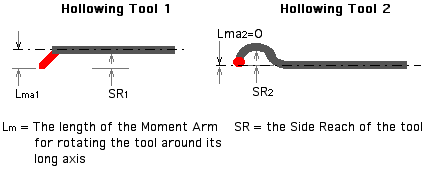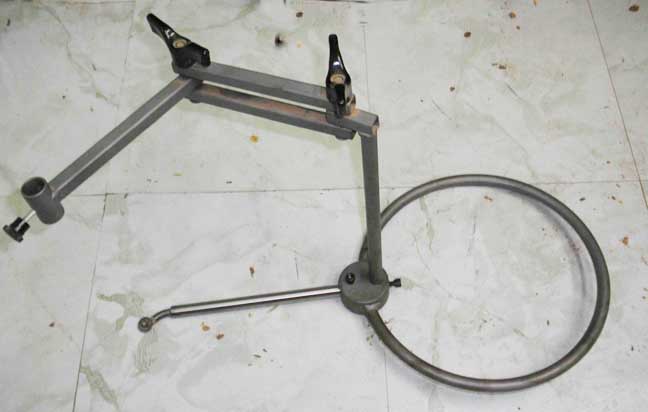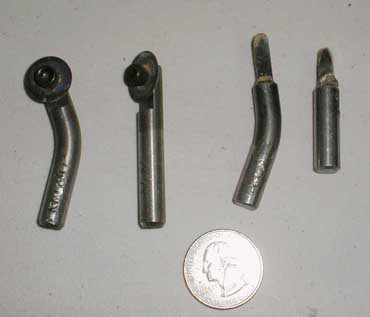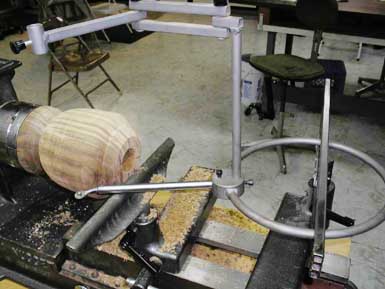HOLLOWING
At some point along the turning journey "hollow forms" gets on the "I think I'd Like To Try" list.
When you actually get around to trying it, some interesting "challenges" come up.
The transition from Bowl Turning to Hollow Forms Turning is a natural progression. The difference between bowl turning and and turning a simple "hollowi form" is, for the most part, merely increasing the tool "overhang" (the length of tool on the piece side of the tool rest). Transitioning from a side cut to a bottom cut gets a little trickier because you're working deeper.
OH - and there's that YOU CAN'T SEE WHERE YOU'RE CUTTING thing.
Almost forgot - bowl gouges don't work inside a hollow form - not enough maneuvering room through a small opening.
With a little practice you can work out techniques that work for you, using either a turning tool or tools you already have, or maybe make, or you may buy a special "hollowing tool". One straight tool with a small carbide insert tip and you're on your way.
And then you decide to try hollowing through an even smaller opening - say 1/2" to 5/8". A hollowed christmas ornament is a great, low risk introduction - small opening, small diameter, a little undercutting,, a short tool reach. Or it might be a weed pot - with a little larger opening than just a drilled hole - to give you more room to get the tool inside the form. Now you need a tool that will undercut - through a small opening. An allen wrench or a concrete nail, a little grinding, maybe a handle and you can make a simple undercutting tool. Or, if you're in a turning club, there's often a member who has made his or her own specialized hollowing tools and might make you one for a nominal cost.
. 
That "through a small opening" thing also presents some visibility "challenges", especially when making undercuts because that often involves changing how much of the cutting/scraping edge of the tool is actually cutting wood. Then, with a bit of experience making cuts when you can't see where the cutter is or the angle the cutter is being presented to the wood, confidence builds.
But that early hollowing experience often includes at least one, if not several, sudden, scary catches. A catch in a more open form is startling enough - but when the tool is inside something and got there through a small opening - and it can't just be pulled away from the piece as you leap/jump back . .. A catch inside something 2, maybe 2 1/2" in diameter is "interesting". But, extrapolating a bit to a four, five or six inch diameter turning and the forces involved with a catch go WAY up, fast! Maybe something that will control the tool if YOU CAN'Y would be a prudent thing to look into.
So after you find angled tool handles, with or without a forearm "cuff", tools with a special tool rest that has a multiple positionable wishbone pivot, special depth of cut cutter heads that reduce the odds of a catch and the rest of the single handle "solutions: - you stumble upon "captured systems" . They prevent the tool from rotating - the most forceful movement, and hardest for you to control thing a catch produces.
When a catch happens the tool wants to do two things
- rotate about its long axis (spin)
- the tip gets pushed DOWN, pivoting off the tool rest, pushing YOUR END UP!
Your job is to come up with enough torque to counter act the torque from the catch - and when you've only got a 2" diameter handle you're gripping. When the cutting end of the tool is forced down you have the long lever arm of the long tool handle to help you.
Look at these two illustrations. Note that when you're cutting or scraping , the the farther the cutting edge in contact with the wood is from the long axis of the tool, the more torque it exerts on the tools shaft. You, on the handle end of the tool, must counteract that torque in order to maintain control of the tool.

As you can see in the above illustration, torque you must counterbalance is directly related to the offset, cutting edge to the tool's long axis centerline. You want a tool that has some "side reach" so you can undercut and cut sideways - but you don't want that ability to create more torque on the tool. The answer - a goose neck / swan neck tool. This keeps the cutting edge ON the centerline of the tool - no torque!




